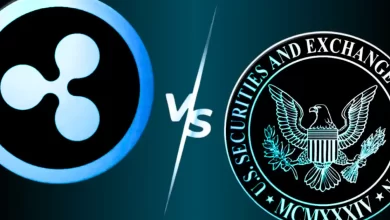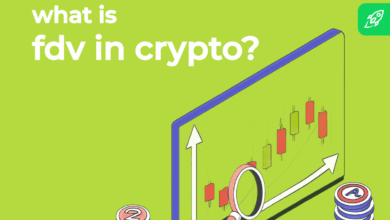Is security tokenization the 'Amazon-moment' for blockchain technology?

Blockchain technology is like a Swiss Army knife that can provide different solutions depending on the problem. Over the past decade, the use cases for blockchain technology have grown from money and payments to decentralized exchanges and nonfungible tokens. Right now, it looks like the next major blockchain use case will be tokenized stocks.
Today, investors are able to buy traditional stocks like Tesla from cryptocurrency fintech firms such as Bitpanda. However, these stock shares are not stored and traded using blockchain technology. The global cryptocurrency exchange Bittrex did briefly let investors trade tokenized stocks like Apple and Pfizer, but they suspended tokenized stock trading shortly after its debut. The reason cryptocurrency exchanges and traditional exchanges have not enabled tokenized stock trading is that it is still a legal gray area.
To provide legal clarity on tokenized stocks, the European Commission is unleashing a forward-thinking regime in March 2023 that may usher in the “killer app” of blockchain technology. The DLT Pilot Regime, supervised by the European Securities Market Authority (ESMA), will test the full potential of tokenized security trading on blockchain technology. The term “security” can refer to stocks, bonds, private equity and many other types of financial investments. ESMA refers to these blockchain-based securities as “DLT financial instruments,” meaning they are financial instruments issued, recorded, transferred and stored using distributed ledger technology.
Related: Cryptocurrency miners are leading the next stage of AI
Companies from both traditional and digital finance will be able to experiment with the use of DLT financial products in a regulated environment. The most powerful aspects of this regime are twofold: First, financial instrument tokenization and trading can use public and permissionless blockchains or permissioned distributed ledger technology. Second, these DLT financial instruments will not only be available for trading by qualified or professional investors; instead, the regulators will experiment with letting retail investors be part of the action.
One of the companies applying for a license to operate under the DLT-pilot regulatory regime is 21finance. CEO Max Heinzle called the tokenization of securities an “Amazon moment,” saying in an interview that the regulation would drive financial inclusion.
“Crypto securities can make finance accessible to 8 billion people with real-time settlement,” Heinzle said. “Crypto securities are forecast to already account for more than 30% of the digital asset market in 2026 — without even considering the impact of the DLT Pilot Regime.”

As a part of an experiment involving blockchain technology, participants in the DLT pilot regime will be exempt from certain sections of legislation regarding financial services. These sections of legislation include the Markets in Financial Instruments Directive (MiFID)and the Central Securities Depositories Regulation (CSDR). Under the DLT Trading and Settlement System (TSS), trading and settlement can be offered from a single counterparty, which makes it particularly interesting in the sense that fewer intermediaries may mean fewer fees for end users.
However, we need to be very careful here because this does not refer to trading in the common use of the word. Rather, the DLT TSS will need to be compliant with the DLT Regime, under the purview of ESMA, meaning that it can only offer a non-discretionary multilateral trading facility. Therefore, participants in the DLT Pilot regime will not enable trading with transparent order books like cryptocurrency exchanges such as Binance. Instead, the trading venue is non-discretionary.
Regulated banks, as well as young fintech firms and crypto startups that are not yet regulated as financial intermediaries, can already apply for approval. Accordingly, after the project’s first three years, ESMA will prepare a report that will form a basis for the European Commission. In turn, this report will inform both the European Parliament and the European Council. They will then decide what measures to take, such as adding financial instruments or increasing or decreasing the caps.
Related: The SEC shook Kraken down for $30M, but it doesn’t mean it had a case
To participate in the DLT pilot program, newcomers to the financial industry who do not hold licenses under MiFID or CSDR will need to obtain special permission from the relevant financial regulators. All of this means that cryptocurrency exchanges and service providers will have access to the sandbox without the requirement that they comply with the broader European Union financial obligations that traditional institutions are required to follow.
Although no participants have been confirmed yet by ESMA, financial institutions and trading venues such as BNY Mellon and Binance have shown interest in participating.
The DLT Pilot Regime takes effect in March, but it has been in the making for years, beginning with the Digital Finance Package revealed by the European Commission in 2020. The goal is to implement and encourage digital finance’s potential for innovation and competition while limiting associated risks. The package also included the Markets in Crypto-Assets regulation, the Digital Operational Resilience Act and a proposal to define or amend certain EU financial services rules — for instance, those related to retail payments.
The DLT Pilot Regime project will ultimately serve as the foundation for future EU policy regarding the application of distributed ledger technology in financial markets.
This article is for general information purposes and is not intended to be and should not be taken as legal or investment advice. The views, thoughts and opinions expressed here are the author’s alone and do not necessarily reflect or represent the views and opinions of Cointelegraph.





